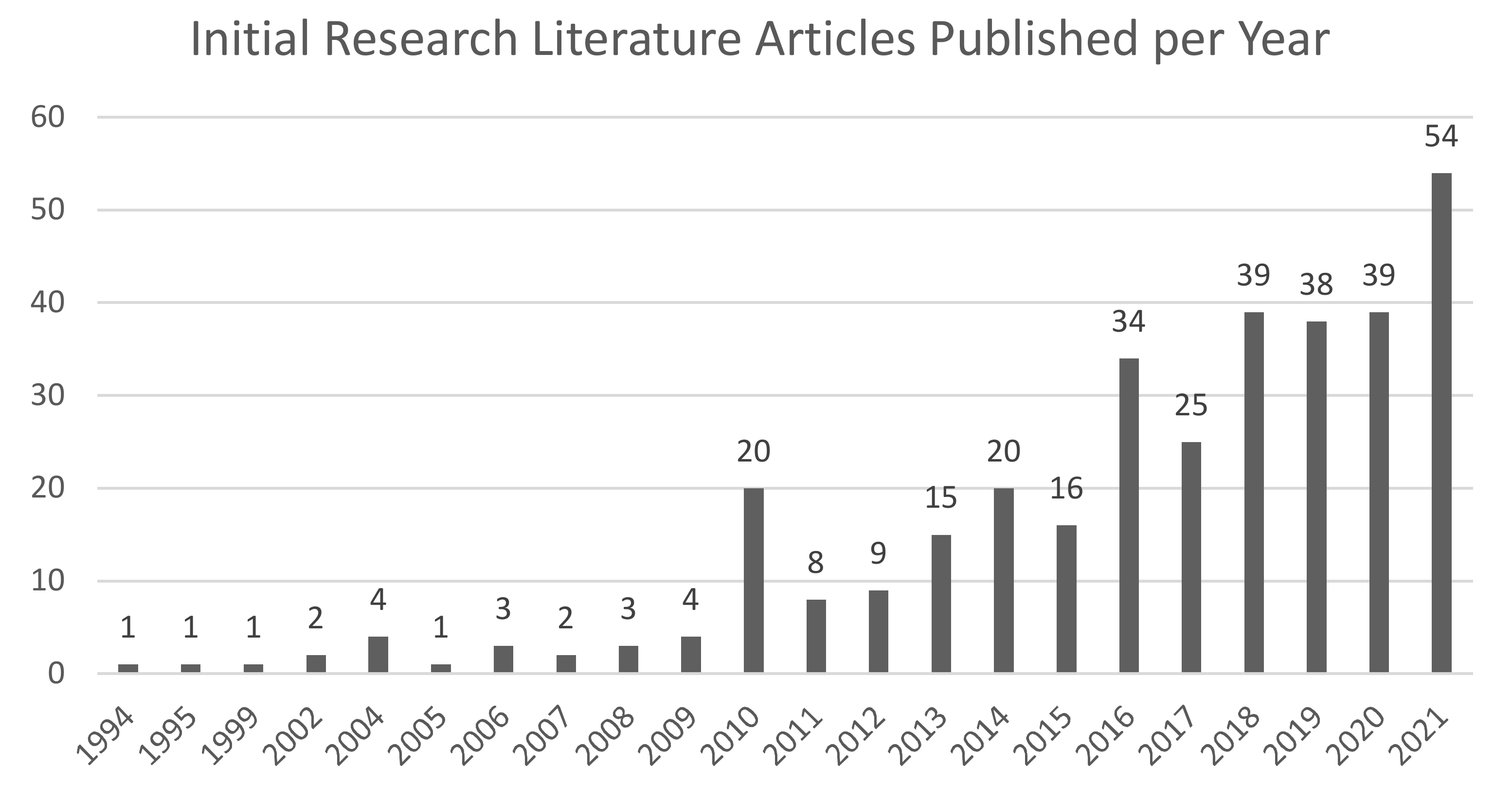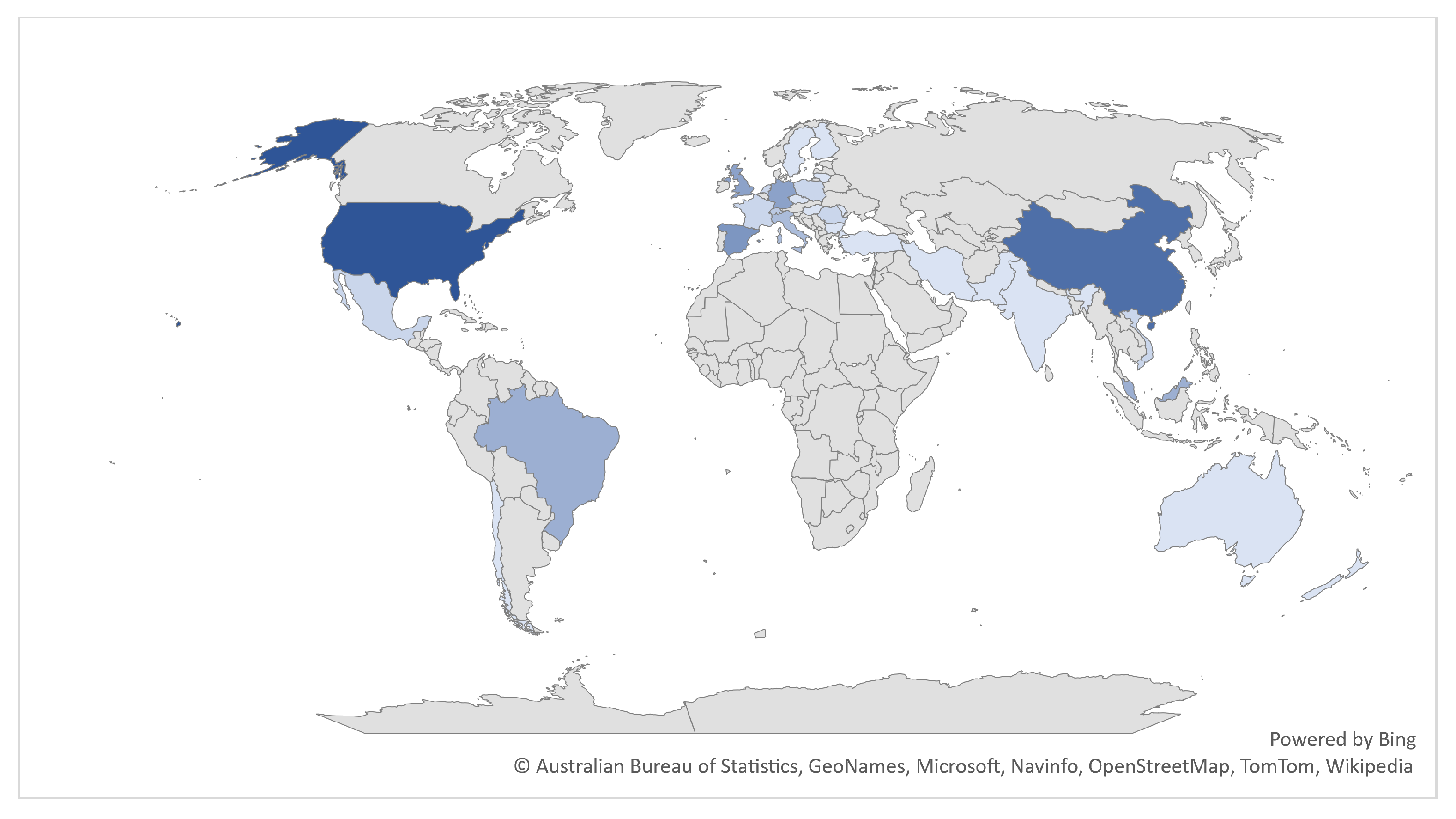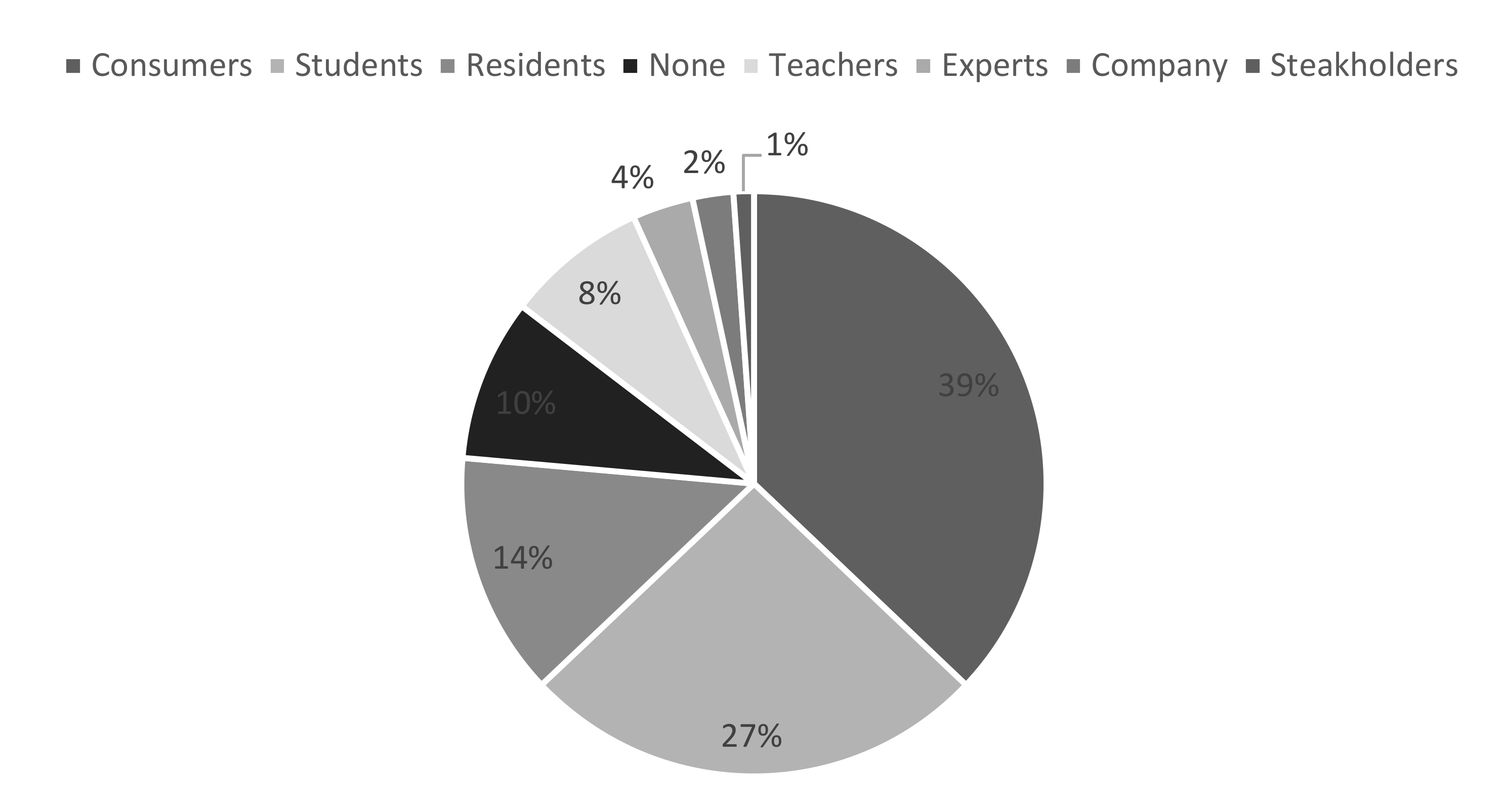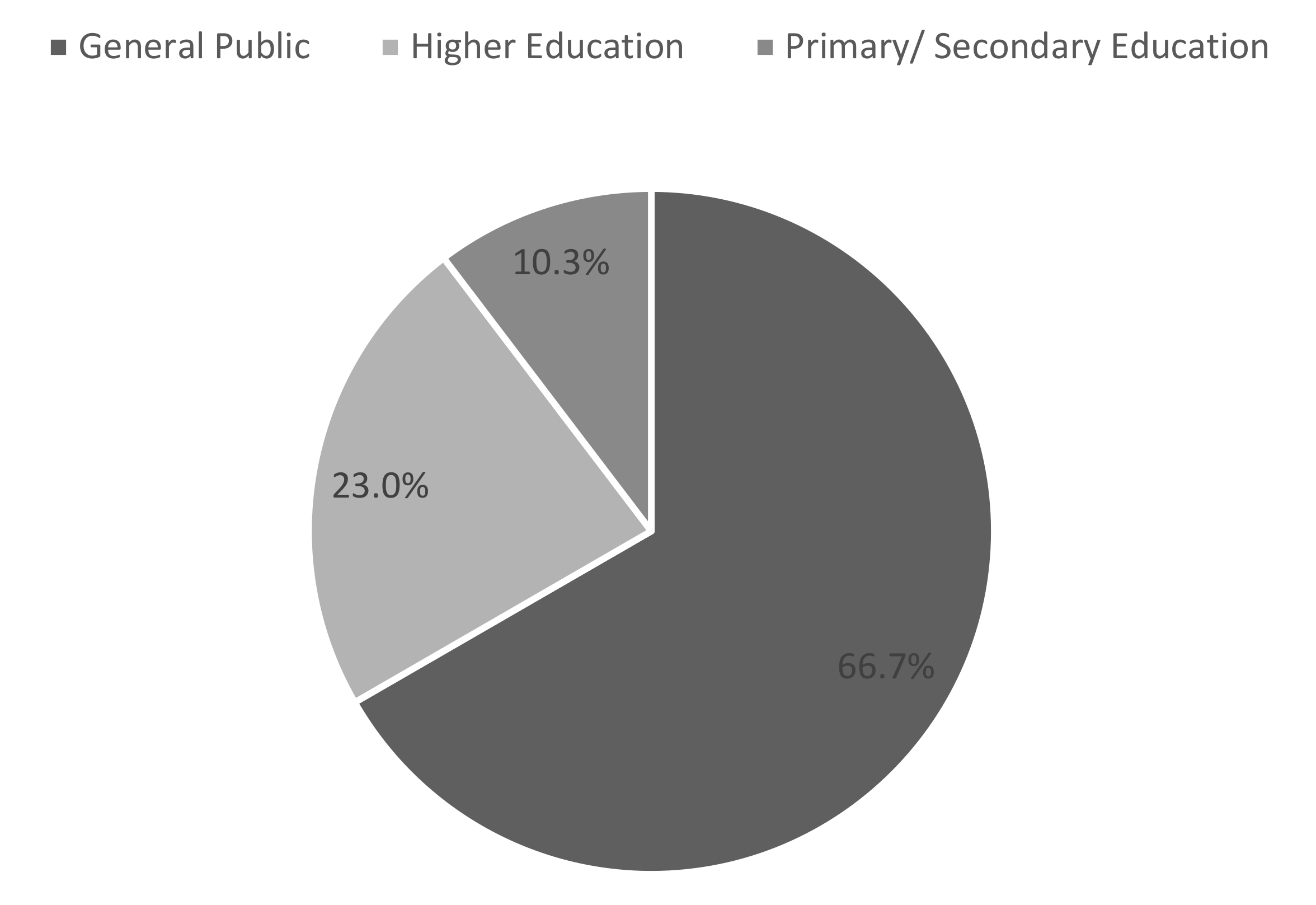Sustainable Consumption and Education for Sustainability in Higher Education
Abstract
:1. Introduction
2. Review Methodology
2.1. Data Sources
2.1.1. Selection of Research Materials
2.1.2. Strategy for Review of Included Studies
3. Literature Analysis
4. Sustainable Consumption
4.1. Immediate Consumption
4.2. Contextual Consumption
4.3. Consumption and Behavior
5. Education for Sustainable Consumption
5.1. Education for Sustainable Consumption and Behavior
5.2. Education for Sustainable Consumption and Higher Education Institutes
6. Conclusions
Author Contributions
Funding
Conflicts of Interest
References
- UN. United Nations Transforming Our World: The 2030 Agenda for Sustainable Development; Department of Economic and Social Affairs: New York, NY, USA, 2015. [Google Scholar]
- OECD Development Co-Operation Report 1997: Efforts and Policies of the Members of the Development Assistance Committee. Available online: https://read.oecd-ilibrary.org/development/development-co-operation-report-1997_dcr-1997-en#page1 (accessed on 29 March 2022).
- UNEP—UN Environment Programme. UNEP 2012 Annual Report. Available online: https://www.unep.org/resources/annual-report/unep-2012-annual-report (accessed on 29 March 2022).
- UNEP—UN Environment Programme. UNEP Programme Performance Report 2016. Available online: https://www.unep.org/resources/report/unep-programme-performance-report-2016 (accessed on 29 March 2022).
- United Nations. United Nations Conference on the Human Environment, Stockholm 1972. Available online: https://www.un.org/en/conferences/environment/stockholm1972 (accessed on 31 March 2022).
- The Belgrade Charter. Available online: https://www.gdrc.org/uem/ee/belgrade.html (accessed on 29 March 2022).
- Tbilisi Declaration. 1977. Available online: https://www.gdrc.org/uem/ee/tbilisi.html (accessed on 29 March 2022).
- United Nations. United Nations Conference on Environment & Development. Available online: https://www.un.org/en/conferences/environment/rio1992 (accessed on 31 March 2022).
- UNEP—UN Environment Programme. UNEP 2010 Annual Report. Available online: https://www.unep.org/resources/annual-report/unep-2010-annual-report (accessed on 29 March 2022).
- Tilbury, D. Education for Sustainable Development: An Expert Review of Processes and Learning; United Nations: Paris, France, 2011. [Google Scholar]
- Lozano, R. Incorporation and Institutionalization of SD into Universities: Breaking through Barriers to Change. J. Clean Prod. 2006, 14, 787–796. [Google Scholar] [CrossRef]
- Galang, A.P. Environmental Education for Sustainability in Higher Education Institutions in the Philippines. Int. J. Sustain. High. Educ. 2010, 11, 173–183. [Google Scholar] [CrossRef]
- Lotz-Sisitka, H. The “Event” of Modern Sustainable Development and Universities in Africa. Sustain. Dev. 2011, 2, 1. [Google Scholar]
- UNEP. Abc of Scp Clarifying Concepts on Sustainable Consumption and Production; United Nations: Paris, France, 2010. [Google Scholar]
- Diamantopoulos, A.; Schlegelmilch, B.B.; Sinkovics, R.R.; Bohlen, G.M. Can Socio-Demographics Still Play a Role in Profiling Green Consumers? A Review of the Evidence and an Empirical Investigation. J. Bus. Res. 2003, 56, 465–480. [Google Scholar]
- Peattie, K. Golden Goose or Wild Goose? The Hunt for the Green Consumer. Bus. Strategy Env. 2001, 10, 187–199. [Google Scholar] [CrossRef]
- Moisander, J. Motivational Complexity of Green Consumerism. Int. J. Consum. Stud. 2007, 31, 404–409. [Google Scholar] [CrossRef]
- Naderi, I.; van Steenburg, E. Me First, Then the Environment: Young Millennials as Green Consumers. Young Consum. 2018, 19, 280–295. [Google Scholar] [CrossRef] [Green Version]
- Jang, Y.J.; Kim, W.G.; Bonn, M.A. Generation Y Consumers’ Selection Attributes and Behavioral Intentions Concerning Green Restaurants. Int. J. Hosp. Manag. 2011, 30, 803–811. [Google Scholar] [CrossRef]
- Śmiglak-Krajewska, M.; Wojciechowska-Solis, J.; Viti, D. Consumers’ Purchasing Intentions on the Legume Market as Evidence of Sustainable Behaviour. Agriculture 2020, 10, 424. [Google Scholar] [CrossRef]
- Kanchanapibul, M.; Lacka, E.; Wang, X.; Chan, H.K. An Empirical Investigation of Green Purchase Behaviour among the Young Generation. J. Clean Prod. 2014, 66, 528–536. [Google Scholar] [CrossRef]
- Cincera, J.; Krajhanzl, J. Eco-Schools: What Factors Influence Pupils’ Action Competence for pro-Environmental Behaviour? J. Clean. Prod. 2013, 61, 117–121. [Google Scholar] [CrossRef]
- Elliott, R. The Taste for Green: The Possibilities and Dynamics of Status Differentiation through “Green” Consumption. Poetics 2013, 41, 294–322. [Google Scholar] [CrossRef]
- Muralidharan, S.; Xue, F. Personal Networks as a Precursor to a Green Future: A Study of “Green” Consumer Socialization among Young Millennials from India and China. Young Consum. 2016, 17, 226–242. [Google Scholar] [CrossRef]
- Morrison, P.S.; Beer, B. Consumption and Environmental Awareness: Demographics of the European Experience; Springer: Berlin/Heidelberg, Germany, 2017; pp. 81–102. [Google Scholar]
- Figueroa-García, E.C.; García-Machado, J.J.; Yábar, D.C.P.B. Modeling the Social Factors That Determine Sustainable Consumption Behavior in the Community of Madrid. Sustainability 2018, 10, 2811. [Google Scholar] [CrossRef] [Green Version]
- Lazaric, N.; le Guel, F.; Belin, J.; Oltra, V.; Lavaud, S.; Douai, A.; Lazaric, N.; Belin, J.; Oltra, V.; Douai, A. Determinants of Sustainable Consumption in France: The Importance of Social Influence and Environmental Values. J. Evol. Econ. 2020, 5, 1337–1366. [Google Scholar] [CrossRef]
- Laroche, M.; Bergeron, J.; Barbaro-Forleo, G. Targeting Consumers Who Are Willing to Pay More for Environmentally Friendly Products. J. Consum. Mark. 2001, 18, 503–520. [Google Scholar] [CrossRef] [Green Version]
- Casimir, G.; Dutilh, C. Sustainability: A Gender Studies Perspective. Int. J. Consum. Stud. 2003, 27, 316–325. [Google Scholar] [CrossRef]
- Straughan, R.D.; Roberts, J.A. Environmental Segmentation Alternatives: A Look at Green Consumer Behavior in the New Millennium. J. Consum. Mark. 1999, 16, 558–575. [Google Scholar] [CrossRef]
- Bamburg, S.; Möser, G. Twenty Years after Hines, Hungerford, and Tomera: A New Meta-Analysis of Psycho-Social Determinants of pro-Environmental Behavior. J. Environ. Psychol. 2007, 27, 14–25. [Google Scholar] [CrossRef]
- Stern, P. Toward a Coherent Theory of Environmentally Significant Behavior. J. Soc. Issues 2000, 56, 407–424. [Google Scholar] [CrossRef]
- Hansmann, R.; Laurenti, R.; Mehdi, T.; Binder, C.R. Determinants of Pro-Environmental Behavior: A Comparison of University Students and Staff from Diverse Faculties at a Swiss University. J. Clean. Prod. 2020, 268, 121864. [Google Scholar] [CrossRef]
- Buhl, J.; Liedtke, C.; Teubler, J.; Bienge, K.; Schmidt, N. Measure or Management?—Resource Use Indicators for Policymakers Based on Microdata by Households. Sustainability 2018, 10, 4467. [Google Scholar]
- Dutta, M.; Gupta, P. Relating Emissions of Carbon to Characteristics of Consumption in India. J. Sustain. Dev. Energy Water Environ. Syst. 2018, 6, 255–275. [Google Scholar] [CrossRef] [Green Version]
- Zhang, J.; Yu, B.; Cai, J.; Wei, Y.-M. Impacts of Household Income Change on CO2 Emissions: An Empirical Analysis of China. J. Clean. Prod. 2017, 157, 190–200. [Google Scholar] [CrossRef]
- Ruppert-Stroescu, M.; LeHew, M.L.A.; Connell, K.Y.H.; Armstrong, C.M. Creativity and Sustainable Fashion Apparel Consumption: The Fashion Detox. Cloth. Text. Res. J. 2015, 33, 167–182. [Google Scholar] [CrossRef]
- Helm, S.; Serido, J.; Ahn, S.Y.; Ligon, V.; Shim, S. Materialist Values, Financial and pro-Environmental Behaviors, and Well-Being. Young Consum. 2019, 20, 264–284. [Google Scholar] [CrossRef]
- Al-Marri, W.; Al-Habaibeh, A.; Watkins, M. An Investigation into Domestic Energy Consumption Behaviour and Public Awareness of Renewable Energy in Qatar. Sustain. Cities Soc. 2018, 41, 639–646. [Google Scholar] [CrossRef] [Green Version]
- Anantharaman, M. Elite and Ethical: The Defensive Distinctions of Middle-Class Bicycling in Bangalore, India. J. Consum. Cult. 2017, 17, 864–886. [Google Scholar] [CrossRef]
- Rakic, M.; Rakic, B. Sustainable Lifestyle Marketing of Individuals: The Base of Sustainability. Amfiteatru Econ. J. 2015, 17, 891–908. [Google Scholar]
- Chekima, B.C.; Syed Khalid Wafa, S.A.W.; Igau, O.A.; Chekima, S.; Sondoh, S.L. Examining Green Consumerism Motivational Drivers: Does Premium Price and Demographics Matter to Green Purchasing? J. Clean. Prod. 2016, 112, 3436–3450. [Google Scholar] [CrossRef]
- Ritter, Á.M.; Borchardt, M.; Vaccaro, G.L.R.; Pereira, G.M.; Almeida, F. Motivations for Promoting the Consumption of Green Products in an Emerging Country: Exploring Attitudes of Brazilian Consumers. J. Clean. Prod. 2015, 106, 507–520. [Google Scholar] [CrossRef]
- Heidbrink, L.; Reidel, J. Nachhaltiger Konsum Durch Politische Selbstbindung/Sustainable Consumption by Political Self-Binding. GAIA-Ecol. Perspect. Sci. Soc. 2011, 20, 152. [Google Scholar] [CrossRef]
- Fischer, D.; Barth, M. Key Competencies for and beyond Sustainable Consumption: An Educational Contribution to the Debate. GAIA-Ecol. Perspect. Sci. Soc. 2014, 23, 193–200. [Google Scholar] [CrossRef] [Green Version]
- Burlea-Schiopoiu, A.; Ogarca, R.F.; Barbu, C.M.; Craciun, L.; Baloi, I.C.; Mihai, L.S. The Impact of COVID-19 Pandemic on Food Waste Behaviour of Young People. J. Clean. Prod. 2021, 294, 126333. [Google Scholar] [CrossRef]
- Bilharz, M.; Schmitt, K. Going Big with Big Matters. The Key Points Approach to Sustainable Consumption. GAIA-Ecol. Perspect. Sci. Soc. 2011, 20, 232–235. [Google Scholar] [CrossRef]
- Stevens, C. Linking Sustainable Consumption and Production: The Government Role; Wiley: Hoboken, NJ, USA, 2010. [Google Scholar]
- Grunwald, A. Wider Die Privatisierung Der Nachhaltigkeit–Warum Ökologisch Korrekter Konsum Die Umwelt Nicht Retten KannAgainst Privatisation of Sustainability—Why Consuming Ecologically Correct Products Will Not Save the Environment. GAIA-Ecol. Perspect. Sci. Soc. 2010, 19, 178–182. [Google Scholar] [CrossRef]
- Aini, M.S.; Fakhru-Razi, A.; Lad, S.M.; Hashim, A.H. Practices, Attitudes and Motives for Domestic Waste Recycling. Int. J. Sustain. Dev. World Ecol. 2002, 9, 232–238. [Google Scholar] [CrossRef]
- Geng, D.; Liu, J.; Zhu, Q. Motivating Sustainable Consumption among Chinese Adolescents: An Empirical Examination. J. Clean. Prod. 2017, 141, 315–322. [Google Scholar] [CrossRef]
- Siebenhüner, B. Kann Die Politik Es Richten? Konsument (Inn) En Als Politische Akteure/Can Politics Solve It? Consumers as Political Actors. GAIA-Ecol. Perspect. Sci. Soc. 2011, 20, 14. [Google Scholar] [CrossRef]
- Lassassi, M.; Ferrer-I-Carbonell, A.; van den Bergh, J.C.J.M. A Micro-Econometric Analysis of Determinants of Unsustainable Consumption in The Netherlands; Springer: Berlin/Heidelberg, Germany, 2004; Volume 27. [Google Scholar]
- Mohamed, A.M.A.; Al-Habaibeh, A.; Abdo, H.; Elabar, S. Towards Exporting Renewable Energy from MENA Region to Europe: An Investigation into Domestic Energy Use and Householders’ Energy Behaviour in Libya. Appl. Energy 2015, 146, 247–262. [Google Scholar] [CrossRef] [Green Version]
- Sole, T.; Wagner, C. Understanding Domestic Fuel Use Practices in an Urban Township. Build. Res. Inf. 2018, 46, 220–230. [Google Scholar] [CrossRef] [Green Version]
- Escoto Castillo, A.; Sánchez Peña, L. Diffusion of Electricity Consumption Practices in Mexico. Soc. Sci. 2017, 6, 144. [Google Scholar] [CrossRef] [Green Version]
- Claudelin, A.; Järvelä, S.; Uusitalo, V.; Leino, M.; Linnanen, L. The Economic Potential to Support Sustainability through Household Consumption Choices. Sustainability 2018, 10, 3961. [Google Scholar] [CrossRef] [Green Version]
- Zhang, H.; Lahr, M.L. Households’ Energy Consumption Change in China: A Multi-Regional Perspective. Sustainability 2018, 10, 2486. [Google Scholar] [CrossRef] [Green Version]
- Papargyropoulou, E.; Lozano, R.; Steinberger, J.K.; Wright, N.; bin Ujang, Z. The Food Waste Hierarchy as a Framework for the Management of Food Surplus and Food Waste. J. Clean Prod. 2014, 76, 106–115. [Google Scholar] [CrossRef]
- Annunziata, A.; Agovino, M.; Ferraro, A.; Mariani, A. Household Food Waste: A Case Study in Southern Italy. Sustainability 2020, 12, 1495. [Google Scholar] [CrossRef] [Green Version]
- Annunziata, A.; Scarpato, D. Factors Affecting Consumer Attitudes towards Food Products with Sustainable Attributes. Agric. Econ. 2014, 60, 353–363. [Google Scholar] [CrossRef] [Green Version]
- Gielissen, R.B. Why Do Consumers Buy Socially Responsible Products? Int. J. Bus. Soc. Sci. 2011, 2, 21–35. [Google Scholar]
- Annunziata, A.; Vecchio, R. Consumers’ Attitudes towards Sustainable Food: A Cluster Analysis of Italian University Students. New Mediterr. J. Econ. Agric. Environ. Rev. 2013, 12, 47. [Google Scholar]
- Zhao, R.; Zhong, S. Carbon Labelling Influences on Consumers’ Behaviour: A System Dynamics Approach. Ecol. Indic. 2015, 51, 98–106. [Google Scholar] [CrossRef]
- Wakefield, A.; Axon, S. “I’m a Bit of a Waster”: Identifying the Enablers of, and Barriers to, Sustainable Food Waste Practices. J. Clean. Prod. 2020, 275, 122803. [Google Scholar] [CrossRef]
- Chen, T.B.; Chai, L.T. Attitude towards the Environment and Green Products: Consumers’ Perspective. Manag. Sci. Eng. 2010, 4, 27–39. [Google Scholar]
- Assarut, N.; Srisuphaolarn, P. Determinants of Green Product Purchase Intentions: The Roles of Environmental Consciousness and Product Attributes. Chulalongkorn Bus. Rev. 2010, 32, 108–122. [Google Scholar]
- Zhu, Q.; Li, Y.; Geng, Y.; Qi, Y. Green Food Consumption Intention, Behaviors and Influencing Factors among Chinese Consumers. Food Qual. Prefer. 2013, 28, 279–286. [Google Scholar] [CrossRef]
- Van de Ven, D.J.; González-Eguino, M.; Arto, I. The Potential of Behavioural Change for Climate Change Mitigation: A Case Study for the European Union. Mitig. Adapt. Strateg. Glob. Chang. 2018, 23, 853–886. [Google Scholar] [CrossRef]
- Nguyen, N.; Greenland, S.; Lobo, A.; Nguyen, H.V. Demographics of Sustainable Technology Consumption in an Emerging Market: The Significance of Education to Energy Efficient Appliance Adoption. Soc. Responsib. J. 2019, 15, 803–818. [Google Scholar] [CrossRef]
- Berry, S.; Whaley, D.; Saman, W.; Davidson, K. Finding Faults and Influencing Consumption: The Role of in-Home Energy Feedback Displays in Managing High-Tech Homes. Energy Effic. 2017, 10, 787–807. [Google Scholar] [CrossRef]
- Ajzen, I. The Theory of Planned Behavior. Organ. Behav. Hum. Decis. Process. 1991, 50, 179–211. [Google Scholar] [CrossRef]
- Ajzen, I. From Intentions to Actions: A Theory of Planned Behavior. In Action Control; Springer: Berlin/Heidelberg, Germany, 1985; pp. 11–39. [Google Scholar]
- Wang, B.; Li, J.; Sun, A.; Wang, Y.; Wu, D. Residents’ Green Purchasing Intentions in a Developing-Country Context: Integrating PLS-SEM and MGA Methods. Sustainability 2020, 12, 30. [Google Scholar] [CrossRef] [Green Version]
- Vining, J.; Ebreo, A. Predicting Recycling Behavior from Global and Specific Environmental Attitudes and Changes in Recycling Opportunities 1. J. Appl Soc. Psychol 1992, 22, 1580–1607. [Google Scholar] [CrossRef]
- Tölkes, C.; Butzmann, E. Motivating Pro-Sustainable Behavior: The Potential of Green Events-A Case-Study from the Munich Streetlife Festival. Sustainability 2018, 10, 3731. [Google Scholar] [CrossRef] [Green Version]
- Bauer, D.; Arnold, J.; Kremer, K. Consumption-Intention Formation in Education for Sustainable Development: An Adapted Model Based on the Theory of Planned Behavior. Sustainability 2018, 10, 3455. [Google Scholar] [CrossRef] [Green Version]
- Penz, E.; Hartl, B.; Hofmann, E. Explaining Consumer Choice of Low Carbon Footprint Goods Using the Behavioral Spillover Effect in German-Speaking Countries. J. Clean. Prod. 2019, 214, 429–439. [Google Scholar] [CrossRef]
- UNEP. HERE and NOW! Education for Sustainable Consumption Recommendations and Guidelines; UNEP: Rome, Italy, 2010. [Google Scholar]
- Klöckner, C.A. A Comprehensive Model of the Psychology of Environmental Behaviour—A Meta-Analysis. Glob. Environ. Chang. 2013, 23, 1028–1038. [Google Scholar] [CrossRef] [Green Version]
- Morren, M.; Grinstein, A. Explaining Environmental Behavior across Borders: A Meta-Analysis. J. Environ. Psychol. 2016, 47, 91–106. [Google Scholar] [CrossRef]
- Hertwich, E.G.; Peters, G.P. Carbon Footprint of Nations: A Global, Trade-Linked Analysis. Env. Sci. Technol. 2009, 43, 6414–6420. [Google Scholar] [CrossRef] [Green Version]
- Liobikienė, G.; Poškus, M.S. The Importance of Environmental Knowledge for Private and Public Sphere Pro-Environmental Behavior: Modifying the Value-Belief-Norm Theory. Sustainability 2019, 11, 3324. [Google Scholar] [CrossRef] [Green Version]
- Michelsen, G.; Fischer, D. Sustainability and Education 1. In Sustainable Development Policy: A European Perspective; Taylor and Francis: London, UK, 2017; pp. 135–158. [Google Scholar]
- Otto, S.; Pensini, P. Nature-Based Environmental Education of Children: Environmental Knowledge and Connectedness to Nature, Together, Are Related to Ecological Behaviour. Glob. Environ. Change 2017, 47, 88–94. [Google Scholar] [CrossRef]
- Salehi, S.; Pazuki Nejad, Z.; Mahmoudi, H.; Knierim, A. Gender, Responsible Citizenship and Global Climate Change. Women’s Stud. Int. Forum 2015, 50, 30–36. [Google Scholar] [CrossRef]
- Barth, M.; Adomßent, M.; Fischer, D.; Richter, S.; Rieckmann, M. Learning to Change Universities from within: A Service-Learning Perspective on Promoting Sustainable Consumption in Higher Education. J. Clean. Prod. 2014, 62, 72–81. [Google Scholar] [CrossRef] [Green Version]
- Kopnina, H. An Exploratory Case Study of Dutch Children’s Attitudes toward Consumption: Implications for Environmental Education. J. Environ. Educ. 2013, 44, 128–144. [Google Scholar] [CrossRef]
- Zsóka, Á.; Szerényi, Z.M.; Széchy, A.; Kocsis, T. Greening Due to Environmental Education? Environmental Knowledge, Attitudes, Consumer Behavior and Everyday pro-Environmental Activities of Hungarian High School and University Students . J. Clean. Prod. 2013, 48, 126–138. [Google Scholar]
- Nässén, J. Determinants of Greenhouse Gas Emissions from Swedish Private Consumption: Time-Series and Cross-Sectional Analyses. Energy 2014, 66, 98–106. [Google Scholar] [CrossRef]
- Yang, S.; Zhang, Y.; Zhao, D. Who Exhibits More Energy-Saving Behavior in Direct and Indirect Ways in China? The Role of Psychological Factors and Socio-Demographics. Energy Policy 2016, 93, 196–205. [Google Scholar] [CrossRef]
- Tanner, C.; Kast, S.W. Promoting Sustainable Consumption: Determinants of Green Purchases by Swiss Consumers. Psychol. Mark. 2003, 20, 883–902. [Google Scholar] [CrossRef]
- Chekima, B.; Chekima, S.; Wafa, S.A.W.S.K.; Igaua, O.A.; Sondoh, S.L. Sustainable Consumption: The Effects of Knowledge, Cultural Values, Environmental Advertising, and Demographics. Int. J. Sustain. Dev. World Ecol. 2016, 23, 210–220. [Google Scholar] [CrossRef]
- Kollmuss, A.; Agyeman, J. Mind the Gap: Why Do People Act Environmentally and What Are the Barriers to pro-Environmental Behavior? Env. Educ. Res. 2002, 8, 239–260. [Google Scholar] [CrossRef] [Green Version]
- Shittu, O. Emerging Sustainability Concerns and Policy Implications of Urban Household Consumption: A Systematic Literature Review. J. Clean. Prod. 2020, 246, 119034. [Google Scholar] [CrossRef]
- Longo, C.; Shankar, A.; Nuttall, P. “It’s Not Easy Living a Sustainable Lifestyle”: How Greater Knowledge Leads to Dilemmas, Tensions and Paralysis. J. Bus. Ethics 2019, 154, 759–779. [Google Scholar] [CrossRef]
- Collins, A.; Galli, A.; Hipwood, T.; Murthy, A. Living within a One Planet Reality: The Contribution of Personal Footprint Calculators. Environ. Res. Lett. 2020, 15, 025008. [Google Scholar] [CrossRef]
- Álvarez-Suárez, P.; Vega-Marcote, P.; Garcia Mira, R. Sustainable Consumption: A Teaching Intervention in Higher Education. Int. J. Sustain. High. Educ. 2013, 15, 3–15. [Google Scholar] [CrossRef]
- Arbuthnott, K.D. Education for Sustainable Development beyond Attitude Change. Int. J. Sustain. High. Educ. 2009, 10, 152–163. [Google Scholar] [CrossRef] [Green Version]
- Thomas, R.E.W.; Teel, T.; Bruyere, B.; Laurence, S. Metrics and Outcomes of Conservation Education: A Quarter Century of Lessons Learned. Environ. Educ. Res. 2019, 25, 172–192. [Google Scholar] [CrossRef]
- Vicente-Molina, M.A.; Fernández-Sáinz, A.; Izagirre-Olaizola, J. Environmental Knowledge and Other Variables Affecting Pro-Environmental Behaviour: Comparison of University Students from Emerging and Advanced Countries. J. Clean. Prod. 2013, 61, 130–138. [Google Scholar] [CrossRef]
- Boca, G.D.; Saraçlı, S. Environmental Education and Student’s Perception, for Sustainability. Sustainability 2019, 11, 1553. [Google Scholar] [CrossRef] [Green Version]
- Petry, R.A.; Fadeeva, Z.; Fadeeva, O.; Hasslöf, H.; Hellström, Å.; Hermans, J.; Mochizuki, Y.; Sonesson, K. Educating for Sustainable Production and Consumption and Sustainable Livelihoods: Learning from Multi-Stakeholder Networks. Sustain. Sci. 2011, 6, 83–96. [Google Scholar] [CrossRef]
- Gombert-Courvoisier, S.; Sennes, V.; Ricard, M.; Ribeyre, F. Higher Education for Sustainable Consumption: Case Report on the Human Ecology Master’s Course (University of Bordeaux, France). J. Clean. Prod. 2014, 62, 82–88. [Google Scholar] [CrossRef]
- Albareda-Tiana, S.; García-González, E.; Jiménez-Fontana, R.; Solís-Espallargas, C. Implementing Pedagogical Approaches for ESD in Initial Teacher Training at Spanish Universities. Sustainability 2019, 11, 4927. [Google Scholar] [CrossRef] [Green Version]
- Valor, C.; Antonetti, P.; Merino, A. The Relationship between Moral Competences and Sustainable Consumption among Higher Education Students. J. Clean. Prod. 2020, 248, 119161. [Google Scholar] [CrossRef]
- Barth, M.; Fischer, D. Key Competencies for Sustainable Consumption. In Proceedings of the 2nd PERL International Conference—Beyond Consumption: Pathways to Responsible Living, Berlin, Germany, 19–20 March 2012; pp. 65–79. [Google Scholar]
- Barth, M.; Godemann, J.; Rieckmann, M.; Stoltenberg, U. Developing Key Competencies for Sustainable Development in Higher Education. Int. J. Sustain. High. Educ. 2007, 8, 416–430. [Google Scholar] [CrossRef] [Green Version]
- Frisk, E.; Larson, K. Educating for Sustainability: Competencies & Practices for Transformative Action. J. Sustain. Educ. 2011, 2, 3. [Google Scholar]
- Rieckmann, M. Future-Oriented Higher Education: Which Key Competencies Should Be Fostered through University Teaching and Learning? Futures 2012, 44, 127–135. [Google Scholar] [CrossRef]
- Segalàs, J.; Ferrer-Balas, D.; Mulder, K.F. What Do Engineering Students Learn in Sustainability Courses? The Effect of the Pedagogical Approach. J. Clean. Prod. 2010, 18, 275–284. [Google Scholar] [CrossRef]
- Wiek, A.; Withycombe, L.; Redman, C.L. Key Competencies in Sustainability: A Reference Framework for Academic Program Development. Sustain. Sci. 2011, 6, 203–218. [Google Scholar] [CrossRef] [Green Version]
- Bransford, J.D.; Brown, A.L.; Cocking, R.R. How People Learn; National Academy Press: Washington, DC, USA, 2000; Volume 11. [Google Scholar]
- Kolb, A.Y.; Kolb, D.A. Learning Styles and Learning Spaces: Enhancing Experiential Learning in Higher Education. Acad. Manag. Learn. Educ. 2005, 4, 193–212. [Google Scholar] [CrossRef] [Green Version]
- Schön, D.A. The Reflective Practitioner: How Professionals Think in Action; Routledge: London, UK, 2017; ISBN 1315237474. [Google Scholar]
- Ferrer-Balas, D. Global Environmental Planning at the Technical University of Catalonia. Int. J. Sustain. High. Educ. 2004, 5, 48–62. [Google Scholar] [CrossRef]
- Herrmann, M. The Practice of Sustainable Education through a Participatory and Holistic Teaching Approach. Commun. Coop. Particip. Res. Pract. Sustain. Future 2007, 1, 72–87. [Google Scholar]
- Lipscombe, B.P. Exploring the Role of the Extra-curricular Sphere in Higher Education for Sustainable Development in the United Kingdom. Environ. Educ. Res. 2008, 14, 455–468. [Google Scholar] [CrossRef]
- Winter, J.; Cotton, D. Making the Hidden Curriculum Visible: Sustainability Literacy in Higher Education. Environ. Educ. Res. 2012, 18, 783–796. [Google Scholar] [CrossRef]
- Leroux, J.A.; Lafleur, S. Employability Skills: The Demands of the Workplace. Vocat. Asp. Educ. 1995, 47, 189–196. [Google Scholar] [CrossRef]
- Bringle, R.G.; Hatcher, J.A. Institutionalization of Service Learning in Higher Education. J. High. Educ. 2000, 71, 273–290. [Google Scholar] [CrossRef]
- Hartlieb, S.; Jones, B. Humanising Business through Ethical Labelling: Progress and Paradoxes in the UK. J. Bus. Ethics 2009, 88, 583–600. [Google Scholar] [CrossRef]
- Zen, I.S.; Subramaniam, D.; Sulaiman, H.; Saleh, A.L.; Omar, W.; Salim, M.R. Institutionalize Waste Minimization Governance towards Campus Sustainability: A Case Study of Green Office Initiatives in Universiti Teknologi Malaysia. J. Clean. Prod. 2016, 135, 1407–1422. [Google Scholar] [CrossRef]
- Gilbert, R.; Stevenson, D.; Girardet, H.; Stren, R. Making Cities Work: Role of Local Authorities in the Urban Environment; Routledge: London, UK, 2013; ISBN 1315066432. [Google Scholar]
- Adger, W.N.; Jordan, A. Governing Sustainability; Cambridge University Press: Cambridge, UK, 2009; ISBN 1316104168. [Google Scholar]
- Velazquez, L.; Munguia, N.; Ojeda, M. Optimizing Water Use in the University of Sonora, Mexico. J. Clean. Prod. 2013, 46, 83–88. [Google Scholar] [CrossRef]







Publisher’s Note: MDPI stays neutral with regard to jurisdictional claims in published maps and institutional affiliations. |
© 2022 by the authors. Licensee MDPI, Basel, Switzerland. This article is an open access article distributed under the terms and conditions of the Creative Commons Attribution (CC BY) license (https://creativecommons.org/licenses/by/4.0/).
Share and Cite
Al-Nuaimi, S.R.; Al-Ghamdi, S.G. Sustainable Consumption and Education for Sustainability in Higher Education. Sustainability 2022, 14, 7255. https://doi.org/10.3390/su14127255
Al-Nuaimi SR, Al-Ghamdi SG. Sustainable Consumption and Education for Sustainability in Higher Education. Sustainability. 2022; 14(12):7255. https://doi.org/10.3390/su14127255
Chicago/Turabian StyleAl-Nuaimi, Shaikha R., and Sami G. Al-Ghamdi. 2022. "Sustainable Consumption and Education for Sustainability in Higher Education" Sustainability 14, no. 12: 7255. https://doi.org/10.3390/su14127255
APA StyleAl-Nuaimi, S. R., & Al-Ghamdi, S. G. (2022). Sustainable Consumption and Education for Sustainability in Higher Education. Sustainability, 14(12), 7255. https://doi.org/10.3390/su14127255






